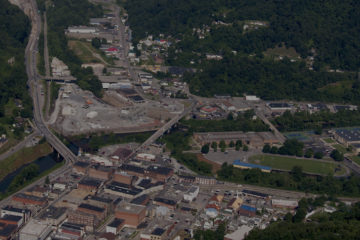I find myself talking a lot about figurative silos. I know I’m not alone in this. Silos are everywhere. We have a silo mentality in West Virginia. By our very nature, in embracing the concept of local control, we build a fertile ground for more silos. So do large bureaucracies. They may work within their parameters but don’t cultivate their own ecology. They speak very different languages.
Silos are having a pandemic moment, because in this urgent time of needed cross-functional solutions between systems, we see them as pronounced obstacles to collaboration. They’ve always been there, but wow- look at how high and impenetrable they are now in this spotlight.
When we started the Health and Hunger Project last January, I had preconceived ideas on how the project would unfold. I thought we’d talk to health care professionals about best practices- about screening for food insecurity and referring to community supports, for example. I thought we’d speak to pantries about healthier food options.
But then in March, the pandemic started to unfold, and I thought a significant first step would be to contact pantries around the state to ask what they need in this time of crisis. It seemed easy enough, right? I started googling databases of pantries around the state.
Here’s what I quickly learned. There are a few food pantry data sites on the internet; all have outdated information. None had pantry directors’ names and email addresses. That’s because precious few pantries have hired staff. I sent postcards to those with listed addresses, and about half of the postcards were returned as undeliverable. I called disconnected numbers; left messages that were occasionally returned. From a returned call, someone suggested I use Facebook to find pantries that were still operating.
And so I did, and that’s how I learned about West Virginia’s loose network of food pantries. I learned that many are operated by churches and staffed by volunteers. Those volunteers are often retired senior citizens, and so, some pantries shut down during the height of the pandemic for their protection.
We surveyed many of those volunteers for the project, and we learned that only a handful of respondents had ever had anyone from their pantry meet with local health care providers. Some pantries were temporarily shut down. Some were working to bring in more volunteers to respond to the growing need. Importantly, many of these pantries respond to needs as determined by their sponsoring agency, which is their church.
Here’s my point: I thought of the food resource provider network as a silo when in truth, it’s not a system. There are two great food banks in our state, and together, they are a team that distributes food to hundreds of food access points around the state. But they don’t operate or manage them. Instead, local food providers are much more part of their community’s ecological system, and they have no hierarchy or regulatory system. WV 2-1-1, operated by the United Way of West Virginia, is the best resource for updated information, but they continuingly have to update their database.
And so, when we look to break down the silos that impede collaboration between food resource providers and the health care system, it’s important to note that we have no state food access point system. There was talk before the legislative session about giving this network funding to help them better respond to the growing need, but how do you do that without a system?
This is very different than the other side of the coin- the health care system. While the food access system isn’t a silo, the health care system often has silos within silos. For years, providers had little incentive to collaborate. New reimbursement structures reward providers who deliver value, and there’s definite value in collaborating- within the health care system and with community partners. Many are doing this now internally, with multidisciplinary teams.
Engaging a health care center or hospital can be an incredible uphill battle for a community partner in many ways. For one, even finding the “right” person in the health system could be problematic. Finding their contact information can be difficult, too. Organizations often don’t share emails or phone numbers for providers. Some organizations rarely permit health care providers to participate in community activities. I’ve known doctors who participate in collaborative work in their communities in their spare time because their employer wouldn’t pay for their time out of the hospital.
And so, when we talk about breaking down silos- especially between systems addressing health and hunger- we need to take a good look at the silos sitting around the shared table. They’re not the same; they do not engage the same way. Simply learning more about how each system operates and how they’ve adapted in this moment of COVID is a critical first step to building the right bridges.
Hopefully, that’s what we’ll continue to do during the Health and Hunger Summit Series.




0 Comments